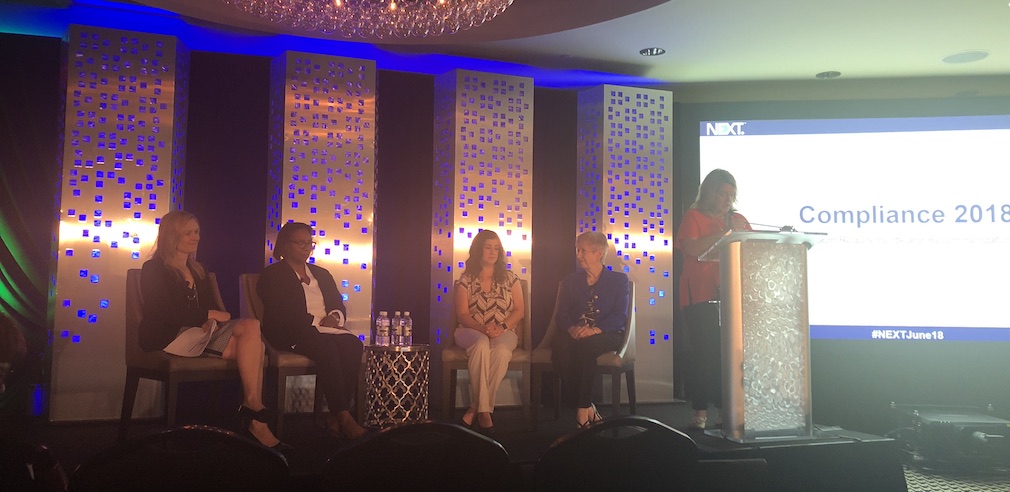While President Donald Trump’s administration has worked to reduce regulations since taking office, compliance continues to be a major problem for many lenders.
Thursday, experts, including Better Mortgage Chief Compliance Officer Paula Tuffin, Plaza Home Mortgage Chief Compliance Officer Carol Carson, Buckley Sandler Partner Melissa Klimkiewicz and Stearns Lending Vice President of Compliance Michelle Ramirez, came together for a panel called "Compliance 2018: Minimum Requirements and Recommendations" at the NEXT Women’s Mortgage Tech conference in Dallas.
The panelists said lenders that operate on a multi-state or nationwide basis find it especially difficult to keep up with changing regulations. But they gave a few tips on how to deal with this challenge.
The first tip? Ramirez told conference attendees to subscribe to and read updates from Consumer Financial Protection Bureau and our own HousingWire.
Carson also said it’s important to work with regional members of the company and develop relationships with them. She said at Plaza Home Mortgage, regional offices are regularly asked to dial in and share what they see happening in their areas, thus helping keep everyone in the company better informed on changing regulatory news.
Compliance issues could continue to grow in the near future as the CFPB takes a back seat, and state regulators continue to play a larger role in the process. Carson stressed several times that maintaining close relationships with other staff members, even those outside of the compliance department, will make the company better prepared to face the changing regulatory environment.
But this isn’t the only compliance issue lenders are facing. The panelists pointed out that the current laws and regulations do not match the changing needs of the mortgage industry. Why? The Equal Credit Opportunity Act.
This act took effect October 28, 1974, and makes it unlawful for a creditor to discriminate against an application, with respect to any aspect of a credit transaction, on the basis of race, color, religion, national origin, sex, marital status or age. It also requires lenders to provide a credit decision within 30 days of receiving the complete mortgage application.
The problem, however, comes in with the uptick in digital mortgage applications.
While conditional loan approval typically comes within the first 24 hours after a borrower applies, final approval is subject to the collection of much more documentation. Oftentimes lenders will file the start date of the loan from the time of the initial credit application, giving themselves just 30 days from that point to collect all needed documentation and give the final approval.
Also, because some borrowers apply online, and never speak to a person, many could be applying for a mortgage, then deciding to go a different route, all without ever speaking to anyone. It is hard for lenders to identify which consumers follow this route, and at what point they should close the loan file.
Carson suggested that lenders not file the loan application as completed upon the initial application as it significantly limits their time to actually complete the loan file and render the final credit decision.
She also said more documentation is always better. Lenders should document every step of the loan so that, if asked, they have documentation of their decisions and the steps they took.
As for future compliance issues, the panelists warned that fair lender compliance will continue to grow, and that more documentation is key to avoiding issues with regulators.
Tuffin pointed out that some borrowers will opt out of reporting their ethnicity online, and if the entire process is completed online or over the phone, the lender can’t fill in their best guess. This creates problems for required HMDA reporting.
So while technology and digital mortgages could do a lot to support compliance issues, they could also come with a whole new set of problems.






